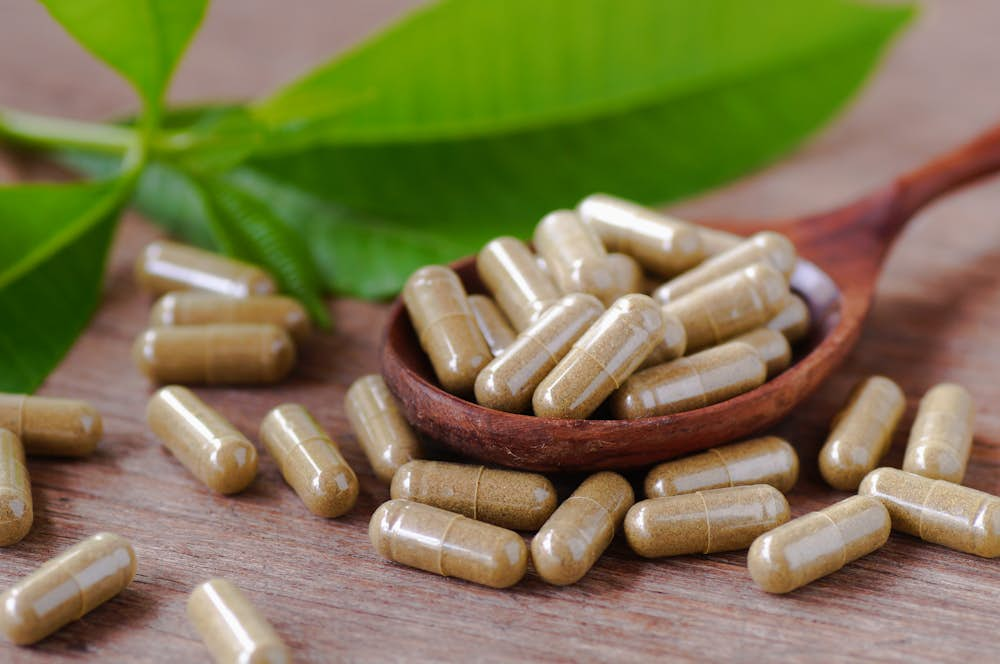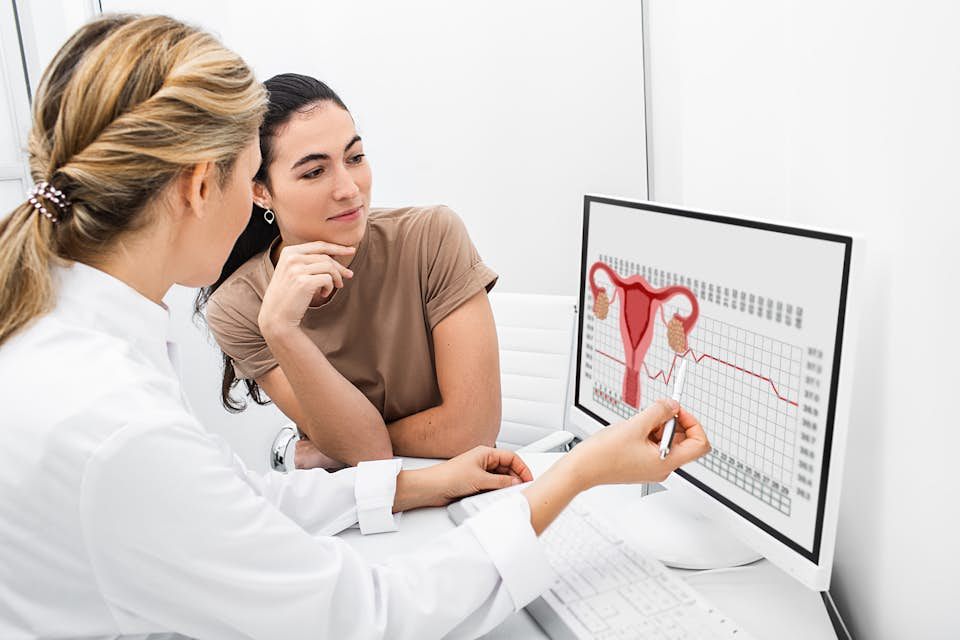
Hormonal disorders and the menstrual cycle: an approach through herbal medicine and alternative treatments
Throughout their lives, women experience drastic hormonal upheavals. Historically, ailments of the female body have been poorly recognized, misunderstood, and even demonized. Research has been led primarily by men, who experience hormonal changes in a very different way to women. From a young age, a woman’s life is punctuated by hormonal cycles that facilitate pregnancy, motherhood, and menopause. Pregnancy comes with extreme change to and pressure on the female body that can leave life-long scars. Motherhood is a period of transition that deserves special attention, as being a woman and a mother simultaneously is a learning experience with unique challenges to overcome. Menopause comes next. This hormonal change is not a disease but a natural transition that is difficult to experience in a society where staying young is valued above all.
During a woman's life, these hormonal changes result in disorders related to premenstrual syndrome (PMS) and chronic pelvic pain, both of which are common issues requiring medical assistance. PMS is a source of embarrassment, discomfort, and mood changes that have detrimental effects on a woman’s quality of life. Cyclic or chronic pelvic pain is often unpleasant, disabling, and disruptive to day-to-day activities during the menstrual cycle. Hormonal disorders can go undiagnosed for a long time as they present with symptoms that are similar to severe PMS. Due to this, diseases like endometriosis have gone unrecognized and undiagnosed. Abnormal uterine bleeding, hormonal disorders, and endometriosis are three conditions that are often taken lightly and poorly treated or mistreated, despite their debilitating nature and potentially grave consequences to overall health.

Female hormonal changes can result in disorders presenting similarly to PMS and chronic pelvic pain, which often require medical assistance.
Abnormal uterine bleeding
Abnormal uterine bleeding (AUB) is one of the most common gynecological disorders that causes considerable morbidity. Its management plays an important role in protecting women's health. It was first cited by Avicenna, the Iranian philosopher and physician (980–1037 AD), who described it in his book the "Kitab Al Qanûn fi Al-Tibb" (The Book of the Law concerning medicine - كتاب القانون في الطب), known in the West as simply Qanûn (1). AUB is defined as bleeding between monthly periods, prolonged bleeding, or extremely heavy periods.
The menstrual endometrium is a physiological example of an injured or "damaged" surface that needs to repair quickly each month. Advances in the understanding of the pathophysiology of the endometrium have been facilitated by modern tools for cellular and molecular discovery, as well as animal models of menstruation simulation (2). Endometrial polyps often accompany AUB (abnormal growths containing glands, stroma, and blood vessels projecting from the lining of the uterus) (3).
AUB lowers iron levels in the blood and often causes anemia (iron deficiency). Herbal medicine offers the wonderful nettle plant, Urtica dioica L., for anemia treatment. It is adaptogenic, very rich in iron, and can be cooked in soup or brewed in herbal tea (4). In addition, painful periods that result from strong uterine contractions can be soothed with essential oil massages with sage or Salvia sclarea L. diluted in sweet almond or vegetable oil (5).
Hormonal disorders and polycystic ovary syndrome
Polycystic ovary syndrome (PCOS) is a hormonal disorder that affects a woman's sex life and reproductive functions. PCOS is a common endocrine disorder characterized by hirsutism (abnormal hair growth), anovulation, and polycystic ovaries. It is often comorbid with insulin resistance, dyslipidemia, and obesity and is also associated with a significant risk of developing cardiovascular and metabolic diseases including diabetes and metabolic syndrome (6). Unfortunately, endocrine disorders are increasingly common in society with the leaching of endocrine disruptor chemicals into the environment from multiple modern industrial practices. When these chemicals enter the body, they increase the natural production of estrogen, and this can lead to hormonal disorders. Therefore, detoxification of the liver through antioxidant supplementation is highly recommended.
In herbal medicine, curcumin is a biologically active phytochemical ingredient extracted from the rhizome of turmeric (Curcuma longa L.) that has beneficial pharmacological antioxidant actions for patients with polycystic ovary syndrome (PCOS). The efficacy of curcumin supplementation was evaluated on oxidative stress enzymes, sirtuin-1 (SIRT1), and the gene expression of the γ receptor 1α coactivator activated by peroxisome proliferators (PGC1α) in patients with PCOS (7). In addition, a favorable effect was noted from the consumption of bear garlic (Allium ursinum L.) on metabolic profiles, hs-CRP, oxidative stress biomarkers, and pregnancy outcomes in pregnant women at risk of pre-eclampsia. These positive effects were demonstrated by a randomized, double-blind, placebo-controlled trial (8). The high antioxidant efficacy and the proven effects of the interaction of the bear garlic leaf extract with the erythrocyte membrane suggest that its constituents not only protect cells against free radicals but also mitigate the effects of oxidative stress (9).

Turmeric extract or curcumin can be used to treat PCOS and endometriosis.
Endometriosis and infertility
Endometriosis is an estrogen-dependent inflammatory disease that affects one in ten women of childbearing age, making it one of the most common chronic gynecological disorders for this demographic (10). It can start in adolescence and is characterized by the presence of cells outside of the uterus that originated from the lining of the uterus. These endometrial cells migrate and invade the reproductive system and cause violent pain during menstruation.
The diagnosis of endometriosis is complex. It takes an average of 6.7 years to diagnose even though the pain it causes is often debilitating to the patient (10). Researchers are working to better understand the mechanisms of this complex disease and its links to infertility, as well as its genetic markers, to facilitate earlier diagnosis and better management. Today, there is no definitive cure for endometriosis and the disease is often managed with hormone therapy and surgery.
Alternative treatments for endometriosis consist of a series of natural remedies that can provide relief from symptoms of the disease. Managing the pain of endometriosis is complex and requires a holistic approach with sustained engagement from the patient. Complementary or non-complementary therapies, pharmacological or not, always associate a technical act with a human act that enhances the treatments. A multidisciplinary (or even interdisciplinary) approach becomes essential in the care of patients suffering from endometriosis. These natural remedies include acupuncture (11, 12), nutritional therapies (13), homeopathy (14), osteopathy (15), and herbal therapies. In the following sections, acupuncture and herbal therapies will be examined in depth.
Acupuncture
In a prospective case-series study, 36 patients with adenomyosis and moderate to severe dysmenorrhea were treated with stepwise acupuncture. A statistically significant analgesic effect was confirmed in patients with dysmenorrhea secondary to adenomyosis. This technique has the advantages of relieving menstrual symptoms, regulating menstrual blood volume, and improving quality of life (12).
Herbal moxibustion (HPM) is a form of heat therapy used in Chinese medicine, often accompanying acupuncture, where dried plant materials are burned on, or very near, the surface of the skin. The effect of HPM on the pain and quality of life in women with endometriosis is currently being tested in a randomized clinical trial involving 36 patients randomly assigned to a treatment group and a control group on a waiting list. This study will provide evidence that confirms whether MPH can be used as a therapeutic option to treat endometriosis (11).
Herbal therapy
The current literature on endometriosis suggests some benefits from consuming anti-inflammatory and antioxidant foods to combat the oxidative stress that has been detected in the peritoneal fluid and peripheral blood of women with endometriosis. Oxidative stress is thought to play a role in the pathological process of endometriosis, so controlling that stress may be a treatment option for the management of endometriosis (16). In several studies, women with endometriosis improved their peripheral antioxidant markers after applying an antioxidant-rich diet (17).
Turmeric (Curcuma longa L.) is cited in Sanskrit writings dating back to 4,000 years BC. It is one of the essential elements of Ayurvedic medicine. In studies, curcumin, the key active ingredient in turmeric, has been shown to decrease the number of endometriosis stromal cells and slow the process of cell growth (21). The addition of curcumin to a culture of human endometrial cells was shown to downregulate inflammation and reduce the expression of factors that contribute to the pathogenesis of endometriosis.
Coriander (Coriandrum sativum L.) is an aromatic plant. It has been used as a medicinal herb since ancient times. Several studies have shown that consuming large amounts of coriander significantly increases the levels of mercury, aluminum, and lead in the urine. This is believed to represent a detoxifying effect, where biochemicals in the coriander help separate heavy metals from body tissue and release them through urine (23, 24, 25, 26). Heavy metals have been linked to endometriosis and other estrogen-dependent diseases. For example, cadmium interacts with estrogen and progesterone receptors and can lead to imbalances in hormone levels (27).
Tea made from the root of burdock (Arctium lappa L.) is widely consumed in traditional Chinese medicine due to its potential therapeutic properties. The bioactive compounds of the burdock root, like polyphenols, have shown antioxidant and anti-inflammatory properties in various in vivo and in vitro biological tests (28).
Nutritional therapies
Recent studies have determined the effects of vitamin D supplementation on the clinical symptoms and metabolic profiles of patients with endometriosis. Overall, the results demonstrated that vitamin D intake in patients with endometriosis resulted in significant improvement in pelvic pain, the total cholesterol/HDL ratio, and hs-CRP and TAC levels, but it did not affect other clinical symptoms and metabolic profiles (29).
The influence of diet on the development of endometriosis has also been studied. Fish oil capsules, in combination with vitamin B12, have been associated with a positive effect on the symptoms of endometriosis (especially dysmenorrhea). Alcohol and increased consumption of red meat and trans fats are associated with a negative effect. This is why the general recommendations for a balanced and varied diet are presented to patients diagnosed with endometriosis, along with the recommendation to eliminate alcohol (30).
Conclusions
Disorders of the female reproductive system are common among women in their childbearing years. Endometriosis, PCOS, and AUB affect a significant proportion of women, and yet the understanding and diagnosis of these disorders (for which there are no cures) remains woefully poor. The debilitating nature of these diseases has been linked with life threatening comorbidities such as infertility, suicidal ideation, and cancer (31). Alternative treatments provide hope for relieving symptoms and potentially or even preventing the progression of certain aspects through anti-oxidative and anti-inflammatory activity. Increasing female awareness of their reproductive health, including what is normal and what is not and available alternative therapies, could dramatically improve their quality of life during their reproductive years.
Bibliography
(1) Masumeh Mobli, Marzieh Qaraaty, Gholamreza Amin et al., Scientific evaluation of medicinal plants used for the treatment of abnormal uterine bleeding by Avicenna, Archives of Gynecology and Obstetrics volume 292, pages 21–35, 2015
(2) Hilary O D, Critchley Jacqueline, A Maybin, Gregory M Armstrong et al., Physiology of the endometrium and regulation of menstruation, Physiol Rev, 2020 Jul 1;100(3):1149-1179. doi: 10.1152/physrev.00031.2019. Epub 2020 Feb 7.PMID : 32031903 DOI: 10.1152/physrev.00031.2019
(3) T Justin Clark, Helen Stevenson, Endometrial polyps and abnormal uterine bleeding (AUB-P): what is the relationship, how are they diagnosed and how are they treated? , Best Pract Res Clin Obstet Gynaecol, 2017 Apr;40:89-104. doi: 10.1016/j.bpobgyn.2016.09.005. Epub 2016 Oct 1
(4) Mert Ilhan, Zulfiqar Ali, Ikhlas A Khan, Hakkı Taştan, Esra Küpeli Akkol, Bioactivity-guided isolation of flavonoids from Urtica dioica L. and their effect on endometriosis rat model, J Ethnopharmacol, 2019 Oct 28;243:112100. doi: 10.1016/j.jep.2019.112100. Epub 2019 Jul 17.
(5) Jennifer Wong, Yi-Fen Chiang, Yin-Hwa Shih and all, Salvia sclarea L. Essential oil extract and its antioxidative phytochemical sclareol inhibit oxytocin-induced uterine hypercontraction dysmenorrhea model by inhibiting the Ca 2+-MLCK-MLC20 signaling cascade: an ex vivo and in vivo study, Antioxidants (Basel), 2020 Oct 14;9(10):991. doi:10.3390/antiox9100991.
(6) Renate K Meier, Polycystic ovary syndrome, Nurs Clin North Am, 2018 Sep;53(3):407-420. doi: 10.1016/j.cnur.2018.04.008. Epub 2018 Jul 11.
(7) Javad Heshmati, Fereshteh Golab, Mojgan Morvaridzadeh and all, The effects of curcumin supplementation on oxidative stress, Sirtuin-1 and peroxisome proliferator activated receptor γ coactivator 1α gene expression in polycystic ovarian syndrome (PCOS) patients: A randomized placebo-controlled clinical trial, Diabetes Metab Syndr, Mar-Apr 2020;14(2):77–82. doi: 10.1016/j.dsx.2020.01.002. Epub 2020 Jan 8.
(8) Rezvan Aalami-Harandi, Maryam Karamali, Zatollah Asemi, The favorable effects of garlic intake on metabolic profiles, hs-CRP, biomarkers of oxidative stress and pregnancy outcomes in pregnant women at risk for pre-eclampsia: randomized, double-blind, placebo-controlled trial, J Matern Fetal Neonatal Med, 2015;28(17):2020–7
(9) Sylwia M. Cyboran-Mikołajczyk, Halina Kleszczyńska, Jan Oszmiański, Allium ursinum L. leaves components modified the physico-chemical properties of red blood them from the effects of oxidative stress cells protecting Acta Poloniae Pharmaceutica - Drug Research, 2019 | 76 | 3 | 483–491
(10) Parasar P, Ozcan P, Terry KL. Endometriosis: epidemiology, diagnosis and clinical management. Curr Obstet Gynecol Rep. 2017;6(1):34–41. doi:10.1007/s13669-017-0187-1
(11) Hantong Hu, Lifang Chen, Xiaofei Jin, Ru Li, Jianqiao Fang, Effect of herb-partitioned moxibustion on pain and quality of life in women with endometriosis: a protocol for a randomized clinical trial, J Tradit Chin Med, 2020 Apr;40(2):324–332.
(12) Xue-Si Hou, Ji-Ping Zhao, Ning Wang, Li-Yan Sun, Shu-Han Qu, Xu Meng, Guan-Qun Wang 2, Acupuncture for secondary dysmenorrhea of adenomyosis: a prospective case-series study, Zhongguo Zhen Jiu, 2020 Aug 12;40(8):834–8. doi: 10.13703/j.0255-2930.20190630-0002.
(13) Grisel Alexia ; Bayard Alejandra ; Chatelan Angéline (Dir.) Mémoire de bachelor Impact de la supplémentation nutritionnelle sur les symptômes de l’endométriose : Haute école de santé Genève, 2020.
(14) Rebecca Reid, Amie Steel, Jon Wardle, Jon Adams, Naturopathic medicine for the management of endometriosis, dysmenorrhea, and menorrhagia: a content analysis, J Altern Complement Med, 2019 Feb;25(2):202–226. doi: 10.1089/acm.2018.0305. Epub 2018 Oct 31
(15) Sillem M, Juhasz-Böss I, Klausmeier I and all, Osteopathy for endometriosis and chronic pelvic pain - a pilot study, Geburtshilfe Frauenheilkd, 2016 Sep;76(9):960–963. doi: 10.1055/s-0042-111010.
(16) Shaiesta Amreen, Pratap Kumar, Priyanka Gupta, Pragna Evaluation of oxidative stress and severity of endometriosis, J Hum Reprod Sci, Jan–Mar, 2019;12(1):40–46
(17) Mier-Cabrera J. , Aburto-Soto T., Burrola-Méndez S., Women with endometriosis improved their peripheral antioxidant markers after the application of a high antioxidant diet, Reprod Biol Endocrinol, 2009 May 28;7:54
(18) Kjell Haram, Jan Helge Mortensen Ole Myking, The role of oxidative stress, adhesion molecules and antioxidants in preeclampsia, Curr Hypertens Rev, 2019;15(2):105–112,
(19) Ali Taravati , Fatemeh Tohidi, Comprehensive analysis of oxidative stress markers and antioxidants status in preeclampsia,Taiwan J Obstet Gynecol, 2018 Dec;57(6):779–790,
(20) Oyewopo Adeoye, Johnson Olawumi, Adeleke Opeyemi Review on the role of glutathione on oxidative stress and infertility, JBRA Assist Reprod, 2018 Mar 1;22(1):61–66,
(21) Alexandre Vallée, Yves Lecarpentier, Curcumin and endometriosis Int J Mol Sci, 2020 Mar 31;21(7):2440.
(22) Tahereh, Arablou, Roya Kolahdouz-Mohammadi, Curcumin and endometriosis Review on potential roles and molecular mechanisms, Biomed Pharmacother. 2018 Jan:91–97
(23) Manoj Kumar Velaga, Prabhakara Rao Yallapragada, Dale Williams and all, Hydroalcoholic seed extract of Coriandrum sativum (Coriander) alleviates lead-induced oxidative stress in different regions of rat brain, Biol Trace Elem Res, 2014 Jun;159(1–3):351–63.
(24) Miguel Ángel Téllez-López, Gabriela Mora-Tovar, Iromi Marlen Ceniceros-Méndez and all, Evaluation of the chelating effect of methanolic extract of Coriandrum sativum and its fractions on wistar rats poisoned with lead acetate, Afr J Tradit Complement Altern Med, 2017 Jan 13;14(2):92–102.
(25) Keuri Eleutério Rodrigues, Fábio Rodrigues de Oliveira, Benilson Ramos Cassunde Barbosa, Aqueous Coriandrum sativum L. extract promotes neuroprotection against motor changes and oxidative damage in rat progeny after maternal exposure to methylmercury Food Chem Toxicol, 2019 Nov;133:110755.
(26) Türker Acar, Egemen Kaya, Mustafa Deniz Yoruk, and all, Changes in tissue gadolinium biodistribution measured in an animal model exposed to four chelating agents, Jpn J Radiol,2019 Jun;37(6):458–465.
(27) Rzymski P, Tomczyk K, Rzymski P, Poniedzialek B, Opala T and Wilczak M, Impact of heavy metals on the female reproductive system, AAEM. 2015;22(2):259–264.
(28) Guilherme R Romualdo, Elizangela Dos Anjos Silva, Tereza C Da Silva and all, Burdock (Arctium lappa L.) root attenuates preneoplastic lesion development in a diet and thioacetamide-induced model of steatohepatitis-associated hepatocarcinogenesis, Environ Toxicol, 2020 Apr;35(4):518–527. doi: 10.1002/tox.22887. Epub 2019 Dec 5.
(29) Abolfazl Mehdizadehkashi, Samaneh Rokhgireh, Kobra Tahermanesh, Neda Eslahi, Sara Minaeian, Mansooreh Samimi, The effect of vitamin D supplementation on clinical symptoms and metabolic profiles in patients with endometriosis, Gynecol Endocrinol, 2021 Jan 29;1–6. doi: 10.1080/09513590.2021.1878138.
(30) Martina Helbig, Anne-Sophie Vesper, Ines Beyer, Tanja Fehm, Does nutrition affect endometriosis?, Geburtshilfe Frauenheilkd, 2021 Feb;81(2):191–199. doi: 10.1055/a-1207-0557. Epub 2021 Feb 8.
(31) Togas Tulandi, Endometriosis and pelvic pain awareness: infertility, suicidal ideation and cancer, J Obstet Gynaecol Can, 2021 May;43(5):545–546. doi: 10.1016/j.jogc.2021.03.002. Epub 2021 Mar 4.

Professor Chantal Marion
Professor of Pharmaceutical Sciences
Chantal Marion holds a PhD in pharmaceutical sciences from the Department of Pharmacy at the University of Montpellier, specializing in natural medicines, phytotherapy and aromatherapy. She has been honored by the French government as an Officier in L'Ordre National des Palmes Academiques and as a Chevalier in L'Ordre National du Merite.